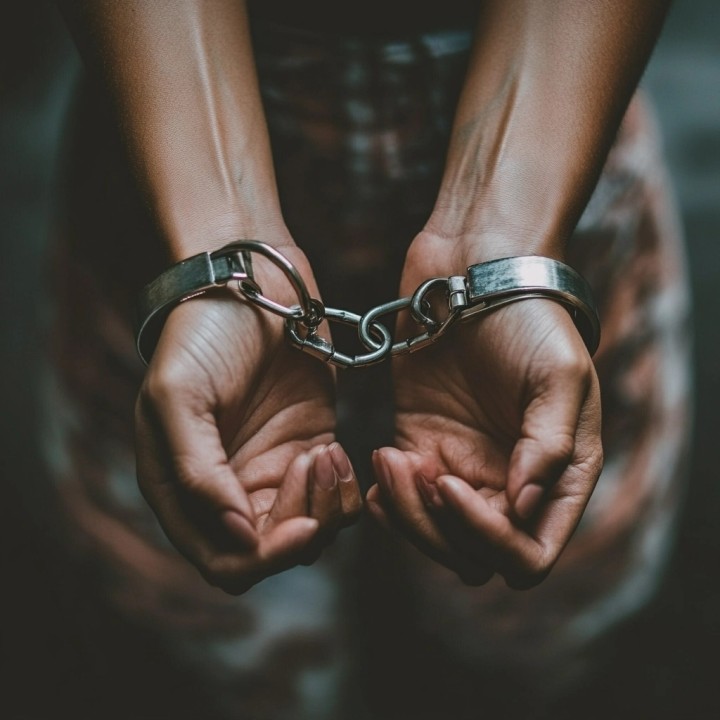Introduction
The question of whether juveniles can get bail is crucial in the juvenile justice system. Bail allows individuals to remain free while awaiting trial, but how does this apply to minors? This article explores the intricacies of juvenile bail, including the legal framework, influencing factors, process, and alternatives. We’ll also examine challenges and future trends to provide a comprehensive understanding of juvenile bail.
Understanding Juvenile Bail
Juvenile bail refers to the provision allowing minors to be released from custody while awaiting trial. This concept is rooted in ensuring fairness and justice for all, regardless of age. Juvenile bail recognizes the unique status and developmental needs of minors, balancing public safety with the child’s best interests.
Historical Perspective on Juvenile Bail
The concept of bail for juveniles has evolved over time. Historically, juveniles were often treated similarly to adults in the legal system. Over the years, significant changes and key legislation have shaped a more nuanced approach, recognizing the distinct needs of juveniles.
Legal Provisions for Juvenile Bail
National Laws
United States
Juvenile bail laws vary by state, but generally, minors can be granted bail under specific conditions. The Juvenile Justice and Delinquency Prevention Act (JJDPA) emphasizes the need for appropriate handling of juvenile cases.
United Kingdom
In the UK, juveniles can be granted bail under the Bail Act 1976, with considerations for the child’s welfare and public safety.
Other Countries
Various countries have their own legal frameworks governing juvenile bail, reflecting different cultural and legal traditions.
International Standards
UN Guidelines
The United Nations Convention on the Rights of the Child (UNCRC) provides a framework for treating juveniles in the justice system, emphasizing their right to be treated in a manner consistent with their dignity and worth.
Human Rights Considerations
International human rights standards stress the importance of ensuring that juveniles are not unnecessarily detained and have access to fair bail conditions.
Differences by Region
Developed vs. Developing Countries
The approach to juvenile bail can vary significantly, with developed countries often having more structured and supportive systems compared to developing nations.
Regional Variations
Within countries, regional differences in juvenile justice practices can also impact bail decisions.
Factors Influencing Juvenile Bail Decisions
Nature of the Offense
Misdemeanors
Minor offenses may result in more lenient bail conditions.
Felonies
Serious crimes can lead to stricter bail terms or denial of bail.
Repeat Offenses
Juveniles with a history of offenses might face more stringent conditions.
Age of the Juvenile
Younger vs. Older Juveniles
Younger children might receive different considerations compared to older teens, reflecting their developmental stage.
Age Thresholds
Legal age thresholds can influence bail decisions, with some systems offering more leniency to very young offenders.
Family Situation
Support Systems
A strong family support system can positively influence bail decisions.
Stability
A stable home environment is a critical factor in granting bail to juveniles.
Supervision
Availability of adequate supervision at home can impact the likelihood of bail.
Risk Assessment
Flight Risk
Evaluating the risk of the juvenile fleeing before trial.
Danger to Community
Assessing whether the juvenile poses a danger to the community.
Prior Record
A juvenile’s criminal history plays a significant role in bail decisions.
The Bail Process for Juveniles
Arrest
When a juvenile is arrested, they are taken into custody, and parents or guardians are notified. This initial phase sets the stage for subsequent legal proceedings.
Detention Hearing
The detention hearing determines whether the juvenile should remain in custody or be released until the bail hearing. This hearing is typically held within 24-48 hours of arrest.
Bail Hearing
During the bail hearing, legal representation is crucial. The court considers various criteria, including the nature of the offense, the juvenile’s background, and potential risks. Possible outcomes range from release on bail to continued detention.
Release Conditions
Conditions for release might include house arrest, curfews, electronic monitoring, and requirements to attend school or counseling sessions.
Alternatives to Bail for Juveniles
Pretrial Supervision
Pretrial supervision involves monitoring juveniles without keeping them in detention. This can include regular check-ins with a probation officer or attending specific programs.
Diversion Programs
Diversion programs aim to redirect juveniles from the justice system to rehabilitation programs. These programs focus on education, community service, and counseling to prevent future offenses.
Community Service
Community service as an alternative to detention allows juveniles to contribute positively to society while awaiting trial. This approach promotes accountability and community engagement.
Challenges in Juvenile Bail
Legal Challenges
Inconsistent Laws
Variations in laws across regions can lead to inconsistencies in how juveniles are treated.
Judicial Discretion
The level of discretion allowed to judges can result in varying outcomes for similar cases.
Appeals Process
Navigating the appeals process can be complex and time-consuming.
Social Challenges
Stigmatization
Juveniles released on bail might face stigma from their peers and community.
Family Impact
The arrest and bail process can strain family relationships and dynamics.
Rehabilitation Issues
Ensuring that juveniles receive appropriate support and rehabilitation services is crucial.
Economic Challenges
Cost of Bail
The financial burden of bail can be significant for families.
Access to Legal Resources
Socioeconomic disparities can affect a juvenile’s ability to secure adequate legal representation.
Socioeconomic Disparities
Economic background can influence bail decisions and outcomes.
Case Studies
Notable Cases
High-profile juvenile bail cases provide insights into how the system works and its challenges. These cases often receive media attention, highlighting issues within the juvenile justice system.
Impact on Legislation
Significant cases can lead to legislative changes and policy reforms aimed at improving the juvenile bail process.
Lessons Learned
Examining past cases helps identify best practices and areas needing improvement in the juvenile justice system.
Future of Juvenile Bail
Trends
Current trends in juvenile justice indicate a move towards more rehabilitative and supportive approaches. Data analysis and future projections help shape policy and practice.
Innovations
Technological solutions, such as electronic monitoring and virtual check-ins, are becoming more prevalent. Policy innovations focus on balancing public safety with the best interests of the juvenile.
Predictions
Experts predict continued reforms in the juvenile justice system, with an emphasis on fair treatment and rehabilitation. Potential changes include more standardized practices and increased support for families.
Conclusion
The question of whether juveniles can get bail is multifaceted, involving legal, social, and economic considerations. Understanding the complexities of juvenile bail, from legal provisions to influencing factors and challenges, is crucial for ensuring fair and just treatment of minors in the justice system. Future trends and innovations promise continued improvements in how juveniles are treated, aiming for a balanced approach that prioritizes both public safety and the well-being of the child.
FAQs
Can juveniles get bail in the United States?
Yes, but it varies by state and the nature of the offense.
What factors influence bail decisions for juveniles?
Factors include the nature of the offense, age, family situation, and risk assessment.
Are there alternatives to bail for juveniles?
Yes, alternatives include pretrial supervision, diversion programs, and community service.
What are the challenges in granting bail to juveniles?
Challenges include inconsistent laws, social stigmatization, and economic disparities.
How does the age of the juvenile affect bail decisions?
Younger juveniles might receive different considerations compared to older teens, reflecting their developmental stage.
What are some innovations in juvenile bail practices?
Innovations include electronic monitoring and virtual check-ins, focusing on rehabilitation and support.






